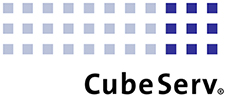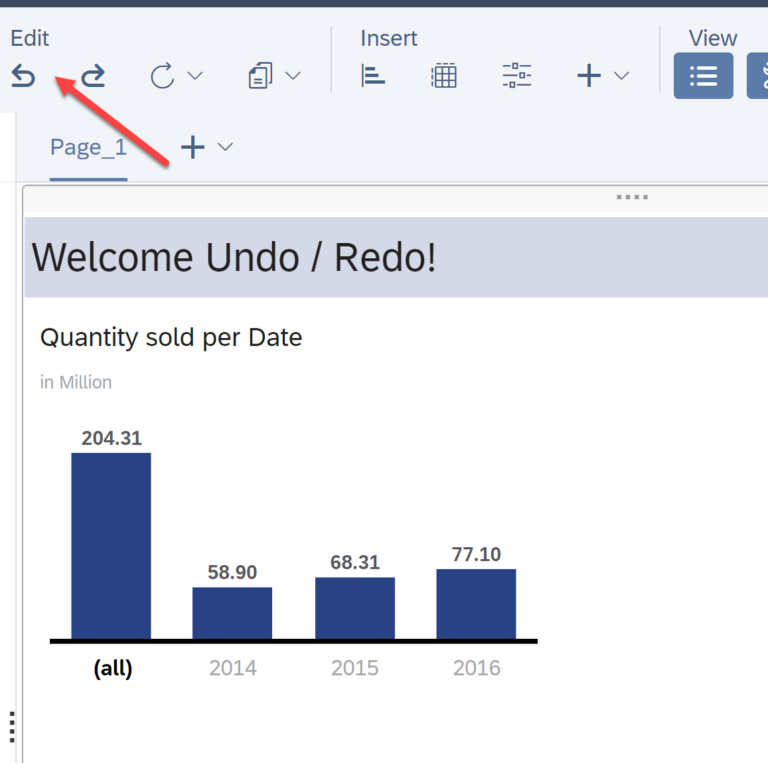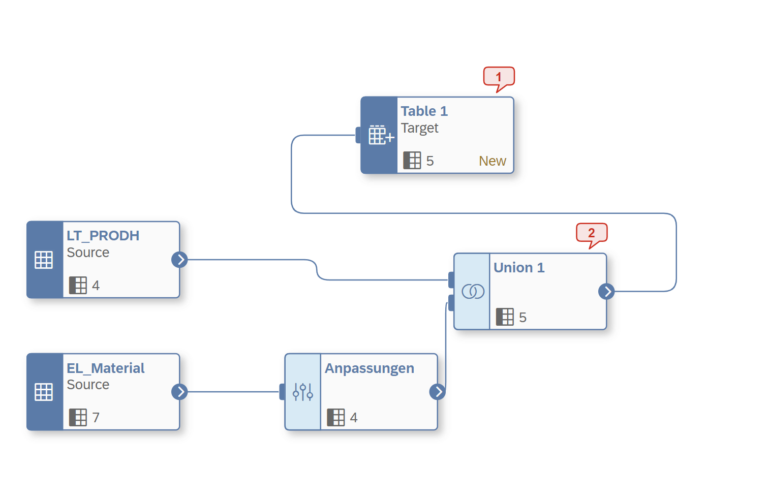What will 2023 bring to the SAP Analytics landscape? The user experience in the SAP Analytics Cloud will be fundamentally improved and, with the One Data Catalog, the SAP Data Warehouse Cloud will establish itself as a central pillar.
Those who expected a turbulent year at the beginning of 2022 were exactly right. Now the Christmas season is just around the corner and the year is saying goodbye with all its crises. On the positive side for me, 2022 was the time when we largely returned to the way we lived our lives before the outbreak of the COVID pandemic.
From my perspective, the pandemic particularly shaped the acceleration of the journey to the cloud. Overnight, (almost) infinite resources were available to enable the shift to the home office and thus new ways of doing things. Many of us were thrown in at the deep end. We had to trust new tools and new vendors and trust them with our valuable data. Not every experience has been as good as we think we deserve.

Reliable infrastructure
It has become clear that we need a reliable infrastructure to deal with multiple threats. To secure us, our data, and our intellectual property, and to preserve them in the event of attacks. We rely on AWS and Azure for infrastructure and are actively supporting SAP’s journey as a SaaS (Software as a Service) provider. From a risk management perspective, many companies are interested in putting vulnerable infrastructure in the hands of large, experienced, and well-funded companies.
With 2023 just around the corner, it’s time to look at three product developments in the SAP portfolio that will keep us busy in the new year – and which I think are likely to have a lasting impact on your project portfolio decisions.
Portfolio convergence is an important buzzword to understand the developments in SAP Analytics Cloud, SAP Data Warehouse Cloud and Data Intelligence.
SAP Analytics Cloud (SAC)

With the Unified Story, SAP is delivering on its promise to integrate the functionality of the current Story (1.0), Analytics Application and SAP Digital Boardroom and provide a unified design environment for both business/BI-focused and developer-focused Analytics Cloud users.
The unified refers not only to the design environment, but also to the data models. So that the common use of BW data and DWC data no longer makes a difference for the user.
That sounds like technical niceties. We’ve all cursed every single developer in Walldorf more than once when, after completing the story, we realized that an important element was now forcing us into the application. So we restarted the next morning, only to discover that features that were not a problem before were now not available in the application. All this unnecessary duplication of work is now eliminated. We will have to wait a few more weeks for the release to reach our tenants (in Q1 for the lucky ones in FastTrack delivery mode and probably mid Q2 for everyone else, like us).
Testing has been very promising. We believe this will make it easier for customers to create and later adopt more technically complex stories. Looking forward to that.
Customer Widgets and CSS
With Customer Widgets, there are no limits to visualization ideas and partner products can now finally be used in the story without any problems. For example, those from graphomate. Another cool feature is the use of different CSS themes (for example light for normal use and dark for presentation mode on the beamer). And of course the integration of different buttons, for example to directly create a ticket to the dashboard.
Another annoyance has now also been removed: Undo/Redo functionality from the SAC. It took a long time, but the many candles I donated in the Einsiedeln monastery were finally heard 😊.
Integration scenarios can now be solved with the new API step in the multi-actions. An example with BW/4HANA was already shown at TechEd.
In addition to the important integration points Business Technology Platform (BTP) and Data Warehouse Cloud, Microsoft Office is also in focus. The SAC add-in for Office supports dynamic formulas and user-defined sorting in the new release. Commenting is then once again on the agenda in 2023.
A look at the roadmap items helps for your own planning.
For many customers, the upgrade or introduction of S/4HANA is on the agenda in the coming weeks and months. This is a good time to update the analytics strategy. For example, to systematically revise the extractors. Learn more now.
Data Warehouse Cloud (DWC)
DWC’s main focus this year is on the already mentioned portfolio convergence. The first major milestone in this investment area is the integration between DWC and SAC Planning. After the bi-directional integration this year, replication-free planning between the two solutions is on the horizon.
I find that the developers improved many small things for users incrementally over the past cycles. For example, the same information about the data does not have to be entered in every layer of the DWC. From my point of view, it would be very desirable if SAP would invest even more in automating data and metadata management, saving users’ time.
In terms of integration with SAP Data Intelligence (DI), DWC will gradually receive more functionalities from DI, eventually replacing SAP Data Intelligence with what SAP calls Replication Flows and Federation Services.
The One Data Catalog has been announced.
This single point of access for all data in the (SAP) BI landscape is able to use metadata from SAP Data & Analytics solutions like DWC, SAC. Important other SAP systems (like SAP BW, BW/4HANA, S/4HANA and HANA itself) will surely and hopefully quickly be integrated.
This will give (end) users a single portal to access all data assets within the SAP BI landscape, regardless of source or location. Of course, the non-SAP systems are still missing then, and until all SAP system types are integrated, we need to find an interim solution. My preference here is DataHub: LinkedIn’s open-source tool for data discovery, catalog and metadata management.
In my view, a comprehensive data catalog is missing from many analytics landscapes to
- Enable users to autonomously discover and leverage the treasure,
- data governance processes to be effective and automated to the greatest extent possible, and
- automate the creation of derived data models (for example, sandboxes for Data Scientists, preparation of SAP data for PowerBI, etc.).
You will certainly have heard of the Data Mesh concept (here my blog post 😊). I see the four pillars (decentralized responsibility, data products as valuable in themselves, autonomous use also for new users, and a platform that ensures governance and compatibility of the various processes and products in a largely automated way) becoming increasingly feasible for you in the SAP Analytics products. In this way, a data culture can be developed in the company that proves itself every day, precisely a basis for fast, good, fact-based decisions.
First steps in the SAP Data Warehouse Cloud are well described in this SAP blog. We presented the HR Analytics solution for DWC in our webinar. You will immediately benefit from the experience gained from the many customer projects and the well-versed CubeServ HR team.
On Premise – Portfolio
In addition to the developments in the cloud, the investments in the existing on-premise products are important in order to recognize that the time until the cloud can still be bridged or the investments can still be used.
We had already mentioned BW/4HANA with the corresponding DSAG guide at this point.
An extension (with restrictions) was also announced for the Business Objects platform and mentioned in our mailing. The SAP Analytics Business Intelligence Statement of Direction describes the details. It gives you and us security beyond 2027.
SAP BusinessObjects BI 2024
We are planning to release a new version of the SAP BusinessObjects BI suite
code named SAP BusinessObjects BI 2024,
- available on-premises and through managed cloud,
- focused on the most widely adopted solutions: SAP BusinessObjects Web Intelligence, single source .unx universes, SAP Crystal Reports, SAP Analysis for Microsoft Office and the SAP BusinessObjects BI platform.
We will provide clear use case migration paths for the components for which we plan the end of support after 2027.
Our intention is to only support Windows and Linux platforms.
Quelle: SAP Analytics Business Intelligence Statement of Direction
In addition to the many new topics, the optimization of the existing landscape should not be neglected. I recommend our two workshops Housekeeping and HCPR Performance.
The feedback on both workshops is consistently enthusiastic.
One participant's voice: "How can you bring such a dry topic across in a lively way? We are now really motivated for the implementation."


